Did you know Liguria boasts an ancient tradition involving nativity scenes? In the eighteenth century, its capital – Genoa – gave life to a school of Presepe makers, and its artisan workshops became famous for the meticulousness of the details and the precious materials they used. Presepe or presepio are the Italian words for the Nativity scene.
The art of the nativity scene in Liguria: a bit of history
The art of the Christmas crèche in Liguria was born and developed in the Baroque age, especially in Genoa. The first productions consisted of figurines carved in wood, then gilded and painted. Various artisans participated in the process of miniaturizing the nativity figurines, embellishing them with gold, silver, ivory and alabaster. Some established themselves as successful goldsmiths, painters and sculptors, including the sons of Filippo Santacroce, Gerolamo del Canto and Giovanni Battista Castello.
During the 18th century, the characters that make up the Ligurian nativity scene increased: the shepherds were joined by farmers, artisans, nobles and commoners, pages, beggars and animals. As the times, tastes and fashion changed, so did the techniques to increase production: the artisans replaced the painted wooden figurines with dressed wooden mannequins, focusing on the details of all the exposed parts such as the glass eyes and hands. Among the most renowned sculptors of this new style is Anton Maria Maragliano, one of the greatest exponents of the Genoese baroque school.
Following the French Revolution and the new order imported into Liguria by the Napoleonic army, nativity scenes remained a tradition of the lower classes. They lost the sumptuousness of the clothes and accessories. Furthermore, the high cost of wood favored the transition from artisanal to industrial work in the kilns of Savona and Albisola, which produced ceramic objects already in the late Roman Empire. Molds were used to create clay figurines, which were then cold painted with bright colours. Among this period’s most famous “figurine makers” is the sculptor Antonio Brilla, who gave Ligurian nativity scenes a characteristic imprint thanks to his ability to create new and different characters.
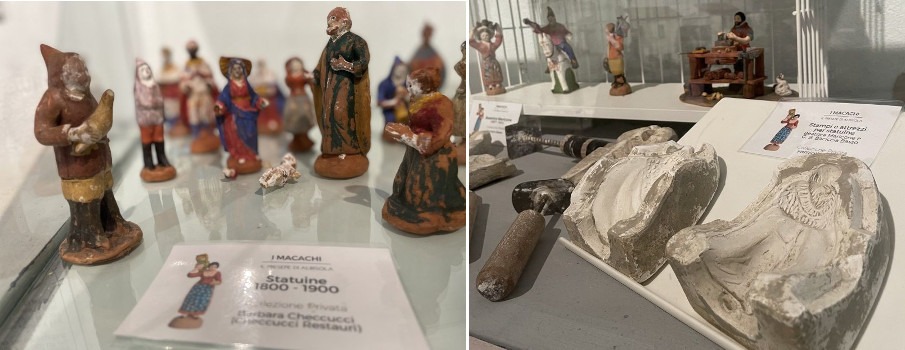
Some figurines were painted at home by the mothers, wives and daughters of the workers of the terracotta factories of Albisola. These creations, painted in a naïve style, were called “macacchi” (fools) and sold during the Santa Lucia annual market on 13 December in Savona. Beatrice Schiappapietra was the last guardian of this unsophisticated but poetic form of craftsmanship.
We close our journey into the history of the art of the Ligurian nativity scene by mentioning the sculptors Tullio Mazzotti and Arturo Martini. In the 1920s, they designed fixed ceramic Christmas cribs in the style proposed by the futurist movement. Martini was not originally from Liguria but lived for a period in this region, where he set up a “studio kiln” and created various works.
The most beautiful nativity scenes on the Ligurian Riviera
Preparing Christmas nativity scenes at home on 8 December (Feast of the Immaculate Conception) is an ancient tradition in all Italian homes, even in Liguria.
Before being joined or even displaced by the Christmas tree, the nativity scene represented an essential ritual in every family: every member had their role in setting it up, and the figurines were handed down for generations, recalling good memories.
Many beautiful nativity scenes are open for the public to admire in Liguria. Here are some of the best not to be missed!
Santuario della Madonnetta (Genoa)
The monumental artistic nativity scene of the Sanctuary of the Madonnetta dates back to the 17th-18th centuries. It comprises around a hundred wooden or costume sculptures, many created by famous artists such as Gaggini, Antonio Maria Maragliano, Pedevilla and De Scopt. It occupies an area of 100 sqm, and its complex scenography includes some of the most representative monuments of Genoa. This nativity scene is permanent.
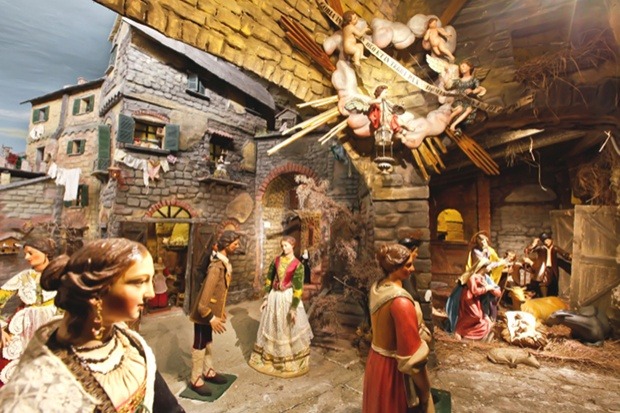
Santuario del Bambin Gesù di Praga (Arenzano)
The most famous ceramic nativity scene in Liguria (in the cover photo of this article) was created in 1967 by Eliseo Salino, a master ceramist from Albisola. This nativity scene is permanent.
The nativity scene of Manarola (La Spezia)
The most famous and biggest nativity scene in Liguria covers the entire surface of the hill of Manarola, one of the villages of the Cinque Terre. It was built by Mario Andreoli, a retired railway worker, with 8 km of electrical cables, 17,000 light bulbs, and more than 300 life-size figures, mostly made from unused or recycled materials.
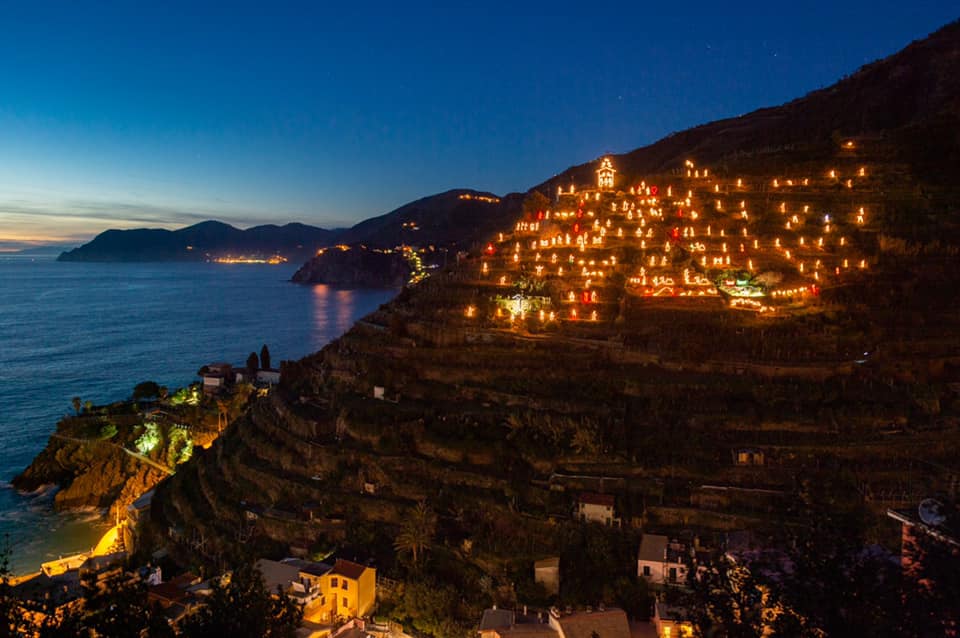
Pentema’s nativity scene (Torriglia)
A winding road takes you up to the tiny hamlet of Pentema on the Torriglia heights. During the Christmas period, the alleys and ancient houses of the town fill up with life-size figures that accurately represent the customs, settings, and trades of the late 19th century.
Mechanical Nativity Scene by Franco Curti (Genoa)
At the Capuchin Museum in Genoa, one of Italy’s oldest mechanical nativity scenes was created in the 1930s by the craftsman Franco Curti. Thanks to 7 motors, more than 300 light bulbs and 250 gears and wheels, it has more than 150 moving characters, waterfalls, light changes, background music and even five mechanical paintings.
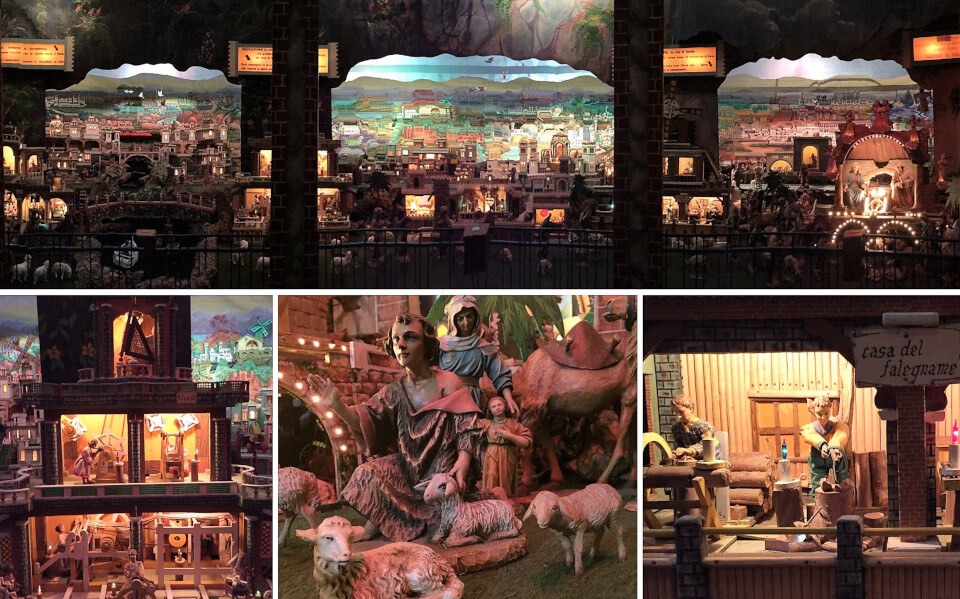
The living nativity scene of Roccavignale (Savona)
This crèche comes to life thanks to more than 250 participants. It is not only a representation of the nativity but is enriched by typical taverns that serve delicious dishes, music and dance shows, fire eaters and other events that make it a unique itinerant Christmas crib.
Nativity scene in the woods of Viganego (Bargagli)
A small forest preserves a jewel of art and tradition, a nativity scene created in 2001 by Cosimo (Mino) Tondo. There are stone houses about 70 centimeters tall, mills and a castle that lead to the scene of the nativity. Everything is made with attention to the smallest details to reflect the style of the ancient local buildings and to show moments of peasant life in a typically Ligurian landscape.
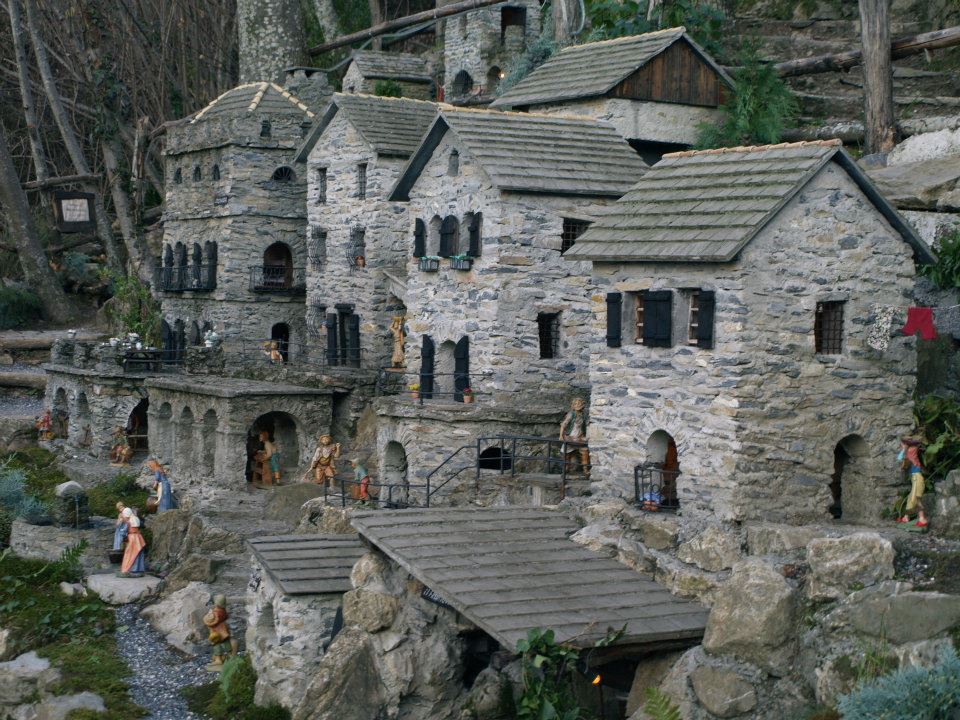
There are many other nativity scenes in Liguria, such as the luminous crèche in Masone, the mechanized one in Campo Ligure and the artistic one in Diano Marina. What is your favorite Ligurian nativity scene? Or which one(s) would you like to visit? Write it in the comments!
COVER PHOTO: A detail from the crib in the Santuario del Bambin Gesù di Praga (photo from gesubambino.org)
Sources:
albissola.com
lamialiguria.it
museidigenova.it
rivieradeibambini.it
Discover more from Discover Portovenere Blog
Subscribe to get the latest posts sent to your email.